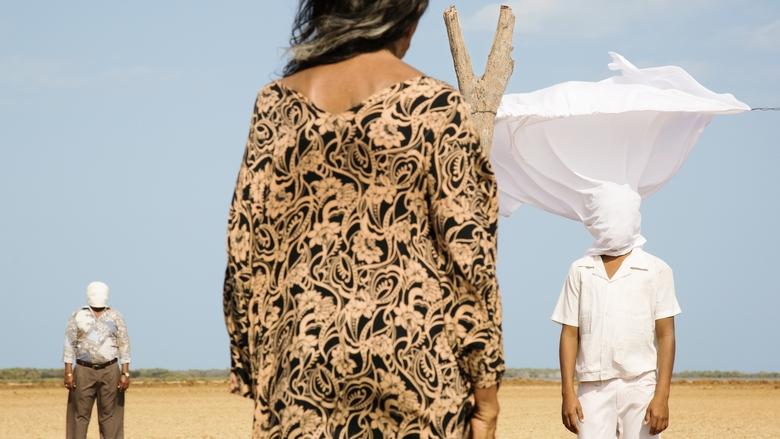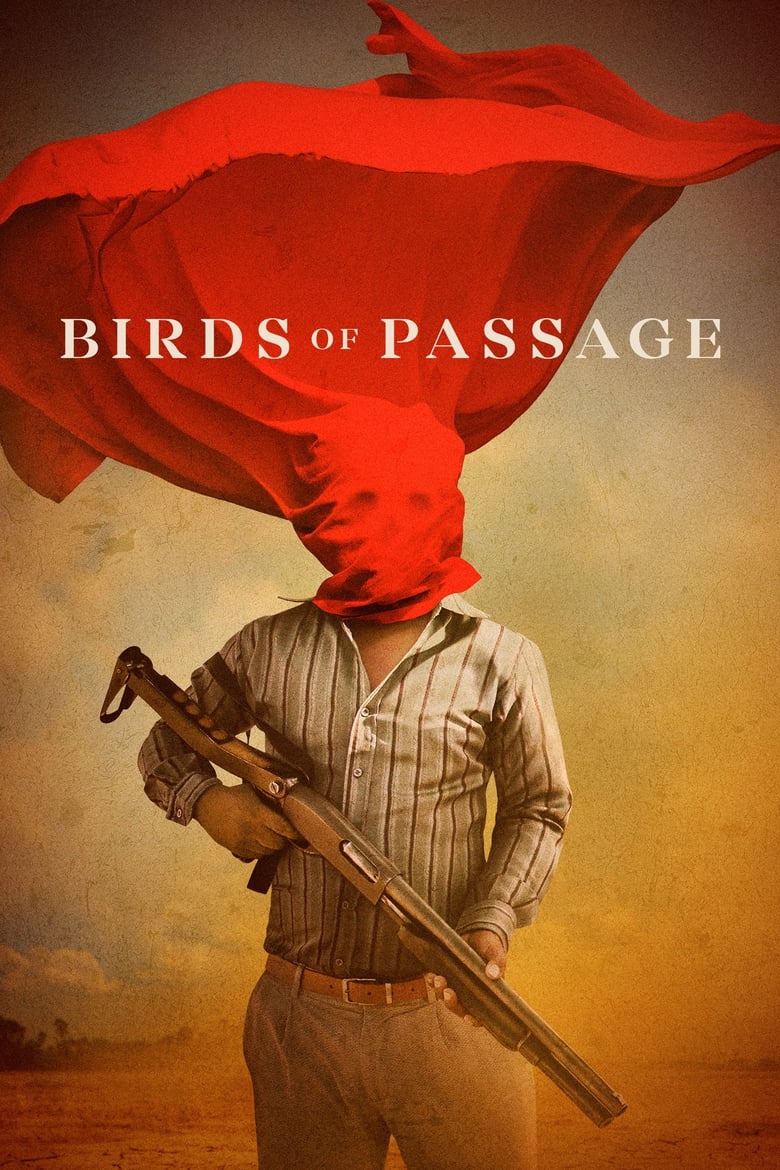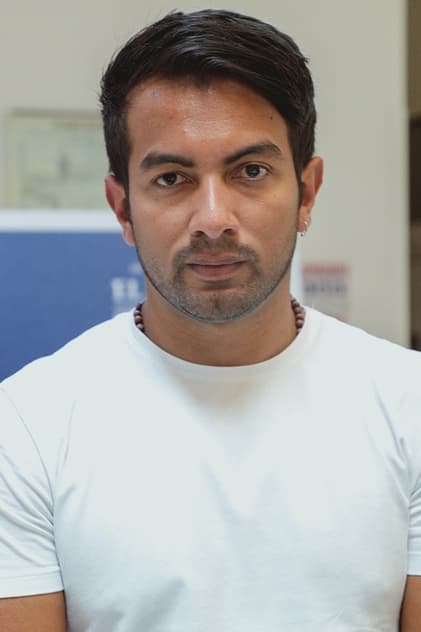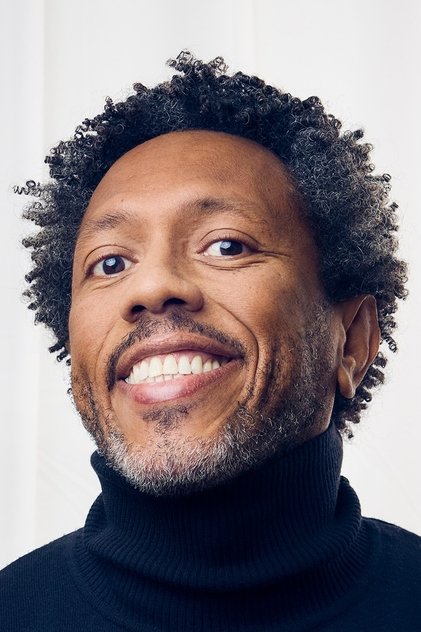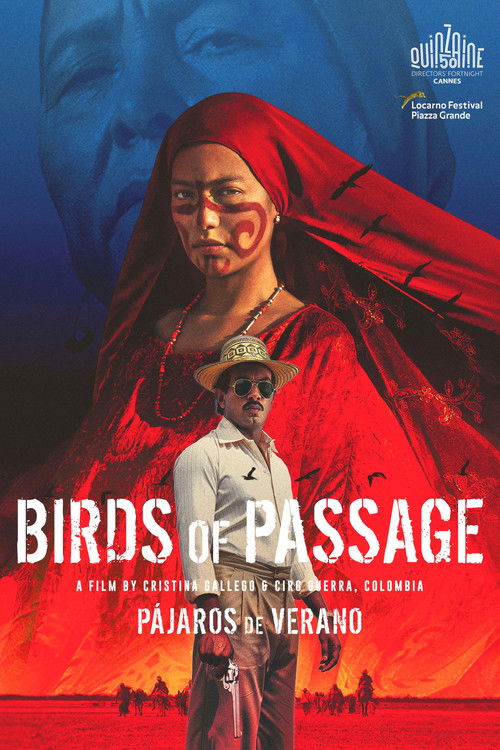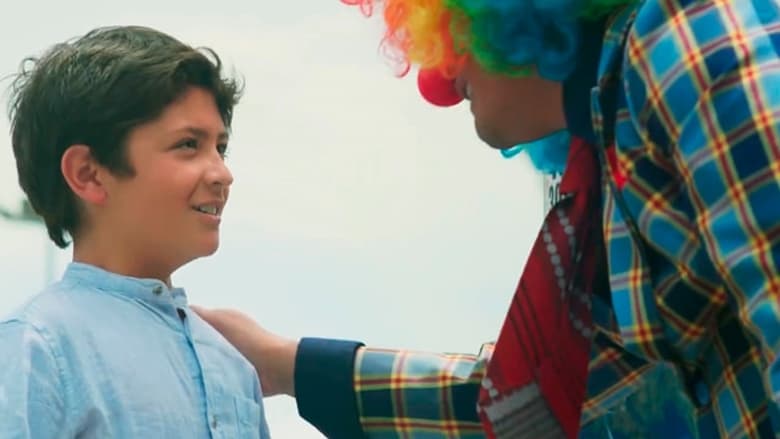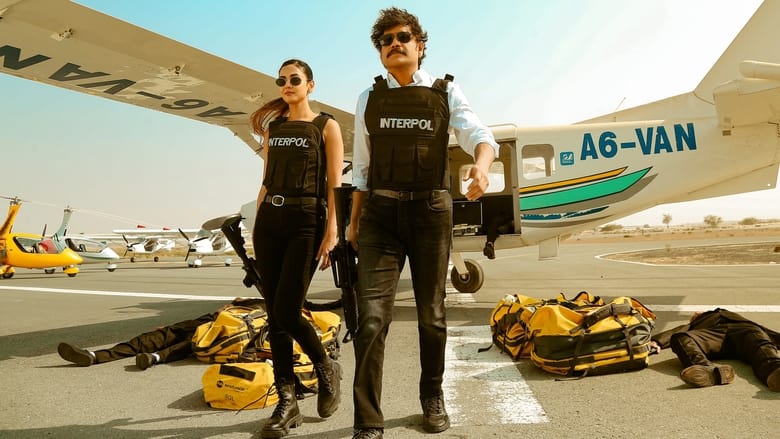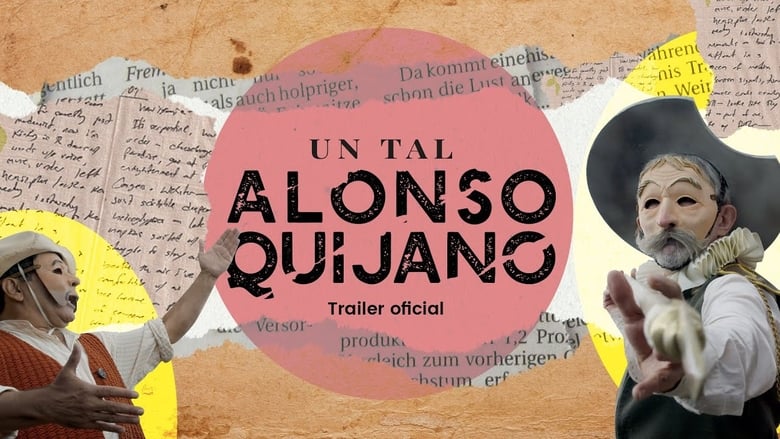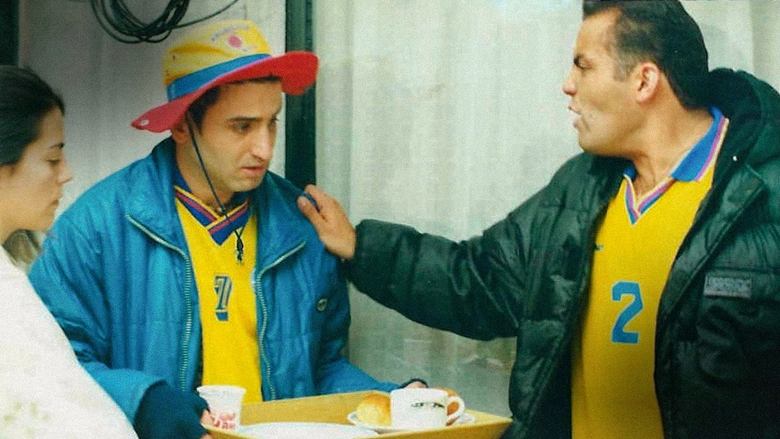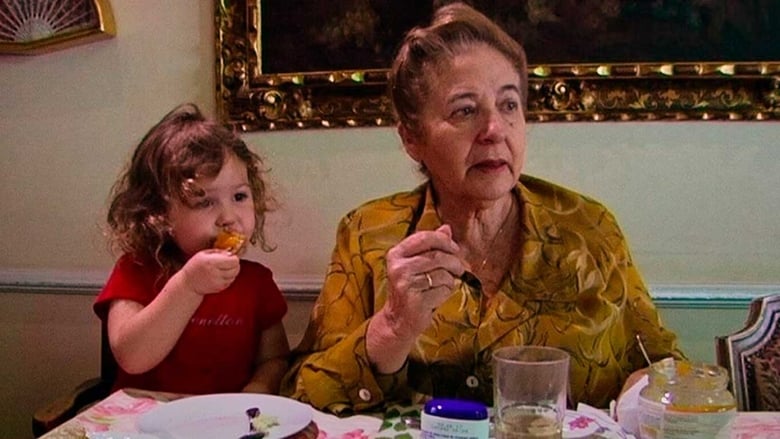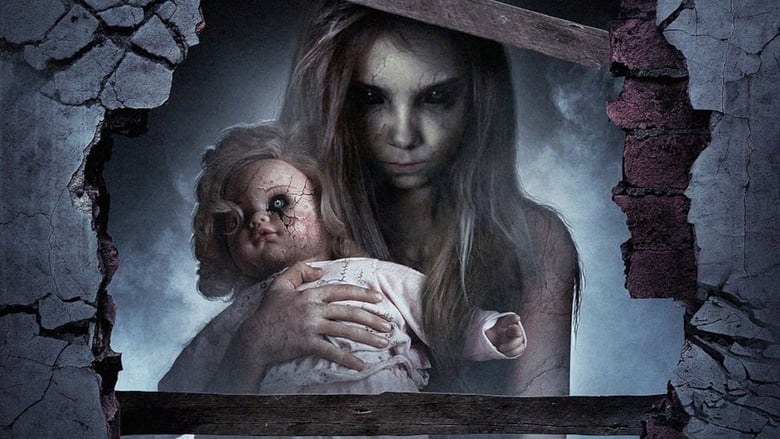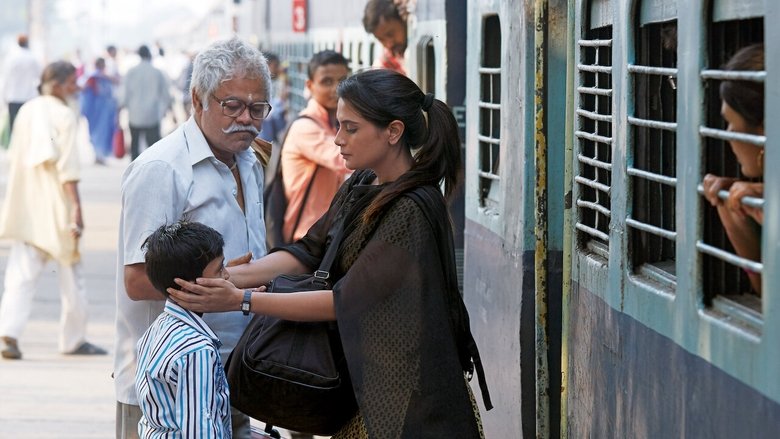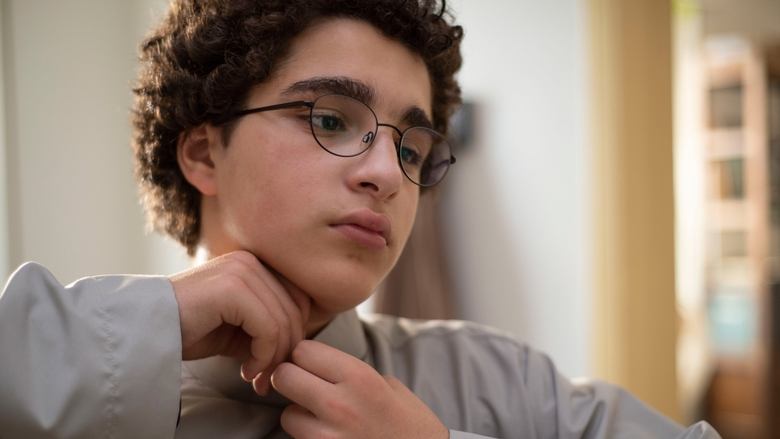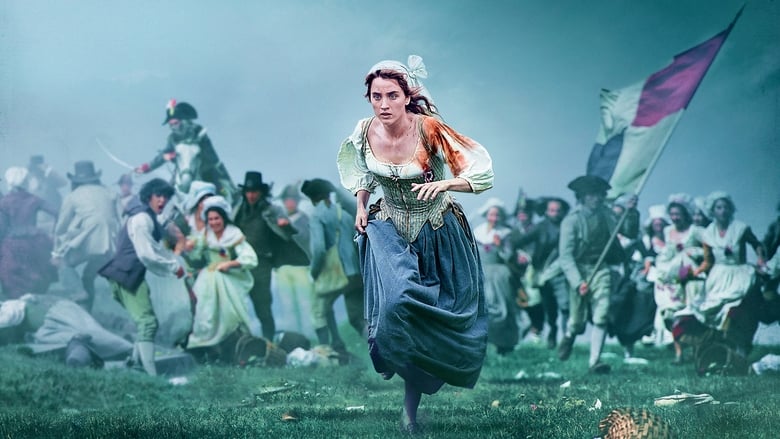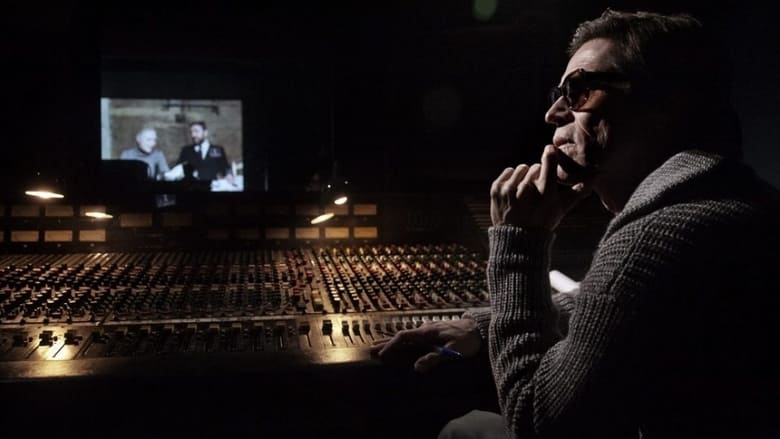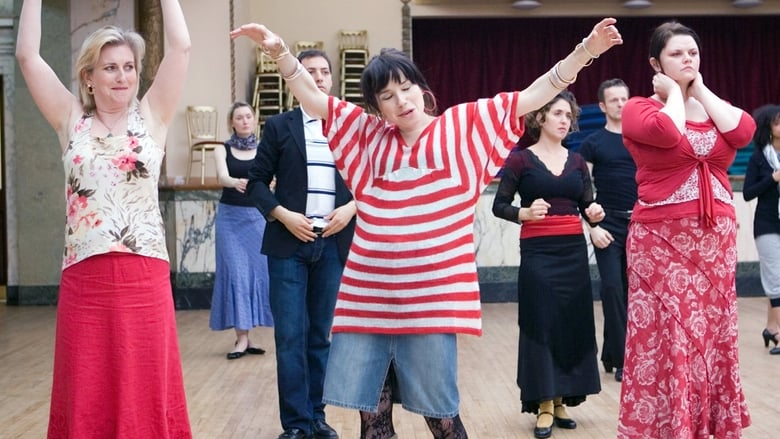A brilliantly made crime saga about the clash between old-world tradition and new-world corruption
I am not against telling stories, but I am against glorifying criminals and showing drug trafficking as glamorous. This confuses youths. I receive tonnes of messages from youths asking for help to be like my dad. They want to be that criminal, they send me photos dressed up like him, with his moustache, his hairstyle. Series about narcos have turned my father into a hero and given young people the idea that it is cool to be a drug trafficker.
- Sebastián Marroquín (born Juan Pablo Escobar), speaking about the TV show Narcos' depiction of his father, drug lord Pablo Escobar; "Pablo Escobar's son slams TV series for 'glorifying' criminals"; Agence France-Presse (March 6, 2017)
Tourists come to Colombia with shirts of Escobar, and it's like an insult to us. It's like glorifying a dictator or Hitler. We were not satisfied with the representation given to drug trafficking in Colombia.
- Cristina Gallego; "Director Cristina Gallego on making a Godfather-style crime story that honours the Wayúu" (Steve Macfarlane); Remezcla.com (October 10, 2018)
We feel that there has been a glorification of criminals, which has been really painful for our country. It's very hard to see Pablo Escobar become a hero to a generation, because his process was really a process of destruction - the moral destruction of our whole country.
- Ciro Guerra; "Birds of Passage directors say they found the real story of narco trafficking from the women, not the men" (Matt Donnelly); The Wrap (November 16, 2018)
Unlike any gangster/drug movie you've ever seen,
Pájaros de verano Birds of Passage is from the same team that made the astonishing
El abrazo de la serpiente Embrace of the Serpent (2015), and presents a thematically similar narrative, looking at the disintegration of an ancient indigenous culture over a period of years. However, whereas
Abrazo depicted an Amazonian civilisation corrupted by the West,
Pájaros deals with the Wayúu people of the Guajira Peninsula in northern Colombia, whose traditions and way of life are decimated by the marijuana trade during the 1970s. Written by Maria Camila Arias and Jacques Toulemonde Vidal from a story by Cristina Gallego, and directed by Gallego and Ciro Guerra (the married couple who produced and directed
Abrazo, respectively, and who got divorced during the filming of
Pájaros), the film spans a 13-year period from 1968 to 1981, during which time the importance of practising sacred rituals is replaced with stories and myths about the importance of practising sacred rituals.
Thematically focused on the clash between ancient tradition and modern greed, the film is deeply respectful of the Wayúu, with Gallego and Guerra clearly troubled by the cultural losses concomitant with monetary prosperity. In this sense, the film is partly an ethnographic study that tasks itself with preserving as much as it can of Wayúu tradition, and partly a genre film depicting the rise and fall of a drug kingpin
á la Brian de Palma's
Scarface (1983). Allowing genre to inform anthropology and anthropology to enrich genre,
Pájaros strikes a broadly successful balance throughout, resulting in a film that consistently depicts familiar genre tropes in a manner which audiences will find unique, especially those whose only familiarity with this
milieu comes from shows like
Drug Wars (1990-1992) and
Narcos (2015-2017), and Americentrist films such as Ted Demme's
Blow (2001), Brad Furman's
The Infiltrator (2016), and Doug Liman's
American Made (2017). On paper, it could be dismissed as just another gangster film, and although their adherence to the genre template does occasionally work against the story they're trying to tell, Gallego and Guerra have made a beautifully nuanced, aesthetically exceptional, and deeply lamentative film.
Loosely based on a true story, and divided into five sections - "Canto I: Wild Grass" (1968), "Canto II: The Graves" (1971), "Canto III: Prosperity" (1979), "Canto IV: The War" (1980), and "Canto V: Limbo" (1981) -
Pájaros opens in a Wayúu village in 1968, with a ceremony celebrating the coming of age of Zaida Pushaina (Natalia Reyes). Under the tutelage of her mother Úrsula (Carmiña Martínez), Zaida has spent the last year in confinement, as is Wayúu tradition, learning handicrafts such as knitting and weaving. The ceremony also doubles as a courtship ritual, with Rapayet (José Acosta) making a claim on Zaida. However, as a small trader of coffee and liquor, he is considered Zaida's social inferior, and was only at the ceremony because his uncle Peregrino (José Vicente Cote) is a "
pütchipü'ü"
word messenger; a vital figure in Wayúu culture who objectively mediates between disputing parties. Hoping to put Rapayet off her daughter, Úrsula assigns him a dowry far beyond his means - thirty goats, twenty cows, two sacred necklaces, and two decorative mules. Desperate to marry Zaida, however, Rapayet seizes on something suggested by his business partner, Moisés (Jhon Narváez), a non-Wayúu who has pointed out that the local American Peace Corp are looking for someone to buy weed from to bring it back to the US. Selling them the marijuana grown on the remote and heavily-guarded farm owned by his cousin Aníbal (Juan Bautista Martínez), Rapayet is not especially bothered that such illegal trade is frowned upon by the Wayúu, and he quickly makes enough money to secure the dowry, marrying Zaida, and eagerly embracing his new-found
parvenu status within the community. By the time we reach Canto II in 1971, Rapayet and the increasingly hot-headed and reckless Moisés are working with a large importer/exporter, flying planeloads of weed across the border, and making so much money they have to weigh it rather than count it. However, as time passes, and the business becomes bigger and bigger, the Wayúu begin to resent the presence of so many "
alijuna"
outsiders who have no respect for their traditions or culture. Working as his advisor, Úrsula warns Rapayet to tread carefully, but as the profit continues to escalate, so too do the tensions between the various players, compounded by Úrsula's cruel and uncontrollable son Leonídas (Greider Meza), who has grown up amidst corruption, decadence, and amorality, and who has no time for Wayúu tradition. When he commits a hideous crime, verbal disagreements quickly turn into tit-for-tat violence, and that violence threatens a war that could destroy the Wayúu entirely.
Historically,
Pájaros touches on four periods of huge national significance in Colombia; it begins ten years after
La Violencia 1948-1958, a civil war fought between the
Partido Conservador Colombiano Colombian Conservative Party and the
Partido Liberal Colombiano Colombian Liberal Party, and four years after the commencement of the "Colombian Conflict", an unnamed low-intensity civil war fought between multiple groups that is ongoing today; Canto III, Canto IV, and Canto V are set during the years of the
Bonanza Marimbera 1975-1985, when drug trafficking first soared; and the film ends just prior to the ascension of Pablo Escobar in 1982. That
Pájaros is aiming for a grand, folkloric tale of national significance, along the same lines as more traditional Colombian myths such as
La Llorona or
El Mohan, is seen in the fact that it both begins and ends with a blind bard (Sergio Coen) narrating the events; telling us this is a story of "
love and desolation, wealth and pain" and it depicts "
how a great family destroyed itself". Taken directly from the Homeric tradition, the presence of this figure immediately indicates the kind of story this is. Structurally and in terms of characterisation, the film evokes Francis Ford Coppola's
The Godfather (1972) - it opens with a prolonged celebration, and regularly features scenes of people eating, as well as social events; Rapayet is a Michael Corleone figure, a good man corrupted by his own success; Moisés is a mixture of the sybaritism of Fredo and the volatile unpredictability of Sonny; Úrsula recalls the scepticism of Kay Adams and the wisdom of Carmela; Aníbal is Virgil Sollozzo, antagonistic and convinced of the strength of his position; Leonídas is Carlo Rizzi, unconcerned with honour or tradition, who looks down on everyone around him. Additionally, the
dénouement unmistakably has something of a
Scarface vibe about it.
Aesthetically, although not as striking as the extraordinary
El abrazo de la serpiente,
Pájaros still looks fantastic. Cinematographer David Gallego really captures the colourful essence of the Wayúu with his rich and textured photography and striking compositions. He also does a fantastic job in his depiction of the vast openness of the desert, with exquisitely composed shots that make full use of the 2.35:1 format. Characters are often dwarfed by the immensity of the desert background, as if their transient existence is insignificant in the face of nature, which, of course, it is. In terms of performances, Carmiña Martínez is the standout. Born in Guajira and with Wayúu roots, she plays Úrsula with an extraordinary degree of depth and gravitas, as someone used to being in a position of authority, and not having that authority questioned. However, even she realises she is out of her depth in Rapayet's drug smuggling, and Martínez taps into the similarities between Úrsula and the queen in any number of Greek tragedies, someone whose beliefs are grounded in ethics, but who is on a preordained path of tragedy from which she cannot escape. And just as the gods were indifferent to the suffering of Euripides's Medea and Sophocles's Electra, so too are the deities of the Wayúu.
Throughout the film, the economy of Gallego and Guerra's visual language is striking. For example, early on, Rapayet, Zaida, and Úrsula are all shown living in small thatched huts made of stone and wood. Later, however, they live in in a heavily guarded sprawling modernist mansion in the middle of the desert, where anyone approaching the house can be seen for miles off. For them, the house symbolises their success. For the audience, however, it's a symbol of the crass absurdity of their opulence. Another example is that, initially, we see Rapayet and Moisés using only one plane to carry their weed, but later, there is a fleet of planes at their command, telling us in one shot how much the scale of their operation has increased. Tied into this is that in the early parts of the film, people trade and negotiate via goats, but by the half-way point, people are paying one another with crates of automatic weapons.
Speaking of aesthetics, although they remain within the parameters of the crime drama, depicting the rise and fall of a gangster, Guerra and Gallego are more concerned with the impact of the drug trade on the Wayúu than the drug trade itself. Uninterested in going into detail about the logistics of Rapayet's operation, there's no montage of planes being loaded with hemp, no tension-filled scenes of interfering law enforcement, no scenes of excessive hedonism based on the spoils of the trade (although Moisés does like a good party). Instead, they use the genre template as a platform from which to examine the clash between the ancient local traditions of the Wayúu and the ubiquitous and corruptive nature of monetary accruement as found in the twentieth-century world at large. The Wayúu are proud of how deep their customs run and how long they have maintained them, pointing out they've survived encounters with the English, Spanish, Portuguese, French, Dutch, and various modern-day Colombian governments. However, their nonconformist and isolationist ideology has never faced anything as insidious as the avarice introduced by Rapayet.
Just how corruptive it is, is seen in Leonídas, a boy who takes wealth for granted and who has never wanted for anything. Thus, he has no respect for anything or anyone - his very soul is built on Mammonism and everything he does is based on entitlement, with the culture of the Wayúu powerless to combat such a person. In perhaps the film's most disturbing scene, after being chastised for his behaviour by Rapayet, Leonídas "proves" his manhood by telling a poor man that if he eats a piece of dog faeces, he will give him a wad of bills. At first, the man refuses, but temptation takes over, and he forces himself to eat the excrement, as Leonídas looks on and laughs, subsequently throwing the money at the vomiting man. Nothing in Wayúu history has ever prepared them for this level of barbarism.
In this sense, much as was
Abrazo, where indigenous cultures were corrupted by (often well-meaning) western explorers and missionaries,
Pájaros is fundamentally about the clash between tradition and modernity; an exchange-based economy built upon codes of honour and reciprocity destroyed by greed, materialism, and an ever-escalating series of violent reprisals and deepening mistrust. In depicting the society before the birth of the drug trade, however, Gallego and Guerra are trying to reclaim Colombia's history for Colombians. The
Bonanza Marimbera and the years of Pablo Escobar are all a lot of people know about the country, with their knowledge coming from films made almost exclusively by non-Colombians for non-Colombians. In interviews, the directors have expressed distaste with the glorification of Escobar, the fact that he has been turned into a folk hero of sorts; Gallego has spoken about how it pains her to see people come to the country wearing t-shirts with Escobar's face on them, whilst even Escobar's own son has spoken out against
Narcos, arguing the show glamorises the drug trade. Gallego and Guerra argue that an entire generation of indigenous people have been forgotten about, a people who were laid waste by the years of excess during the
Bonanza and the horrific violence of the Escobar years.
Trying to commit as much of the Wayúu culture as they can to film in an effort to preserve it, they are thus performing an anthropological service; the film is about the importance of cultural memory, but so too is it a part of that memory. Throughout, we are immersed in Wayúu culture, and Gallego and Guerra don't need to go into detail about the ins and outs of dream analysis, the complex systems of hegemony and protocol, the exchange-based economy, or the specifics of why one necklace is sacred but another is not. We're shown enough to understand how these people live - the centrality of family, the respect for the natural world, the reverence for the dead, the significance of communal ritual, the importance of ancient customs and superstitions. Above all, however, their primary value in all things is honour, which is why Rapayet getting involved in drug smuggling is so controversial for the village. Indeed, at one point he is told, "
you no longer act as Wayúu, you act like alijuna"; one of the deepest insults imaginable in this
milieu, driving home that, yes, he may be making money, but he has lost his cultural soul in the process.
The film makes its intentions known in the opening scene, which is built around Zaida's ceremony, just as
The Godfather indicates its main focus with the opening depiction of a wedding. Without any dialogue, the scene establishes the socio-political centrality of ritual in Wayúu society and introduces us to the social hierarchies and spiritual beliefs. This opening scene is contrasted with a later scene depicting a "
second burial"; a custom where a casket is unearthed and opened, and the bones of the deceased cleaned and reburied. In this scene, although the importance of the ritual is just as paramount as in the opening, unlike in that scene, this ritual is surrounded by men armed with machine guns; a brilliant bit of cinematic shorthand to show us how much has changed. In another example, after doing something to anger a rival clan, Leonídas is hidden away in a hut, and Úrsula performs a protective incantation. Leonídas, however, is unimpressed, saying he'd be happier if he was surrounded by men with guns. Elsewhere, a motif running through the film is the threat of a locust infestation, and when violence inevitably erupts, it's presented like a plague on the land, something that cannot be contained and that will blight all it touches.
In terms of problems, there are a few. For one, Rapayet is an extremely stoic character, about as forceful as Fredo Corleone, and very vaguely defined. In this sense, he doesn't really come across as a person with an interiority, so rather than being someone who pursues things, he is someone to whom things happen, a cypher at the mercy of what the writers need him to be at any given moment. Because of this, he doesn't really have much of an arc - he's essentially the same person as a drug lord as he was when he traded coffee and liquor. Along these lines, Zaida fares even worse. Despite the opening scene suggesting her centrality to the narrative, once she and Rapayet are married, she essentially becomes a background extra, having next-to-nothing to do as Rapayet and Úrsula dominate proceedings. Additionally, at times, the demands of the genre do impinge somewhat on the narrative, with an action scene late in the film feeling out of place (although to be fair, the way it's shot makes up for the scene itself feeling fairly rote).
These few issues notwithstanding,
Pájaros de verano is an exceptional film, and, off the top of my head, I can't think of another movie which captured the clash between the old and new worlds quite as powerfully, with the possible exception of Terrence Malick's
The New World (2005). A melancholy corrective to Fernando León de Aranoa's
Loving Pablo (2017), Pájaros tells a story of a traditional culture decimated by greed. Making a powerful statement about what has been lost, by and large, Gallego and Guerra handle the integration of ethnographic study and genre film very well, with the movie as a whole serving as an excellent example of how talented filmmakers can use genre to serve their own thematic ends without necessarily making a genre film. Neither a thriller with some local details thrown on top nor a documentary with a manufactured dramatic structure,
Pájaros is compelling and heartfelt throughout. The film's sense of detail, its cultural specificity, and the tragic inevitability of the story it tells serve to fuse the socio-political, the ethnographic, and the thriller into a whole that is unlike any drug film you're likely to see.
